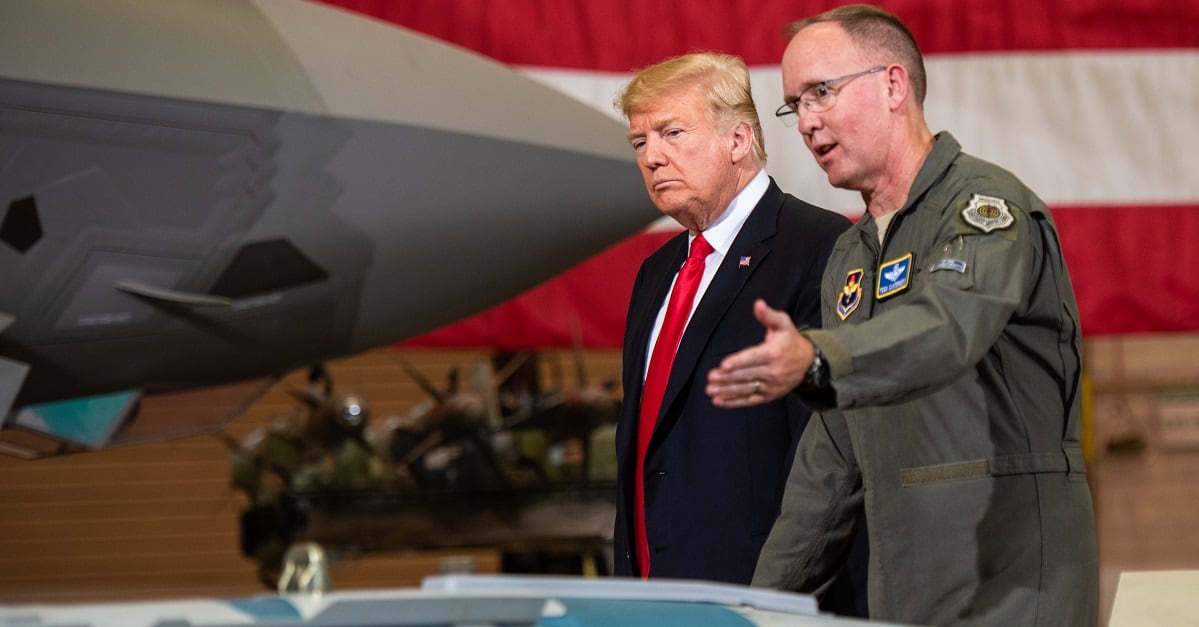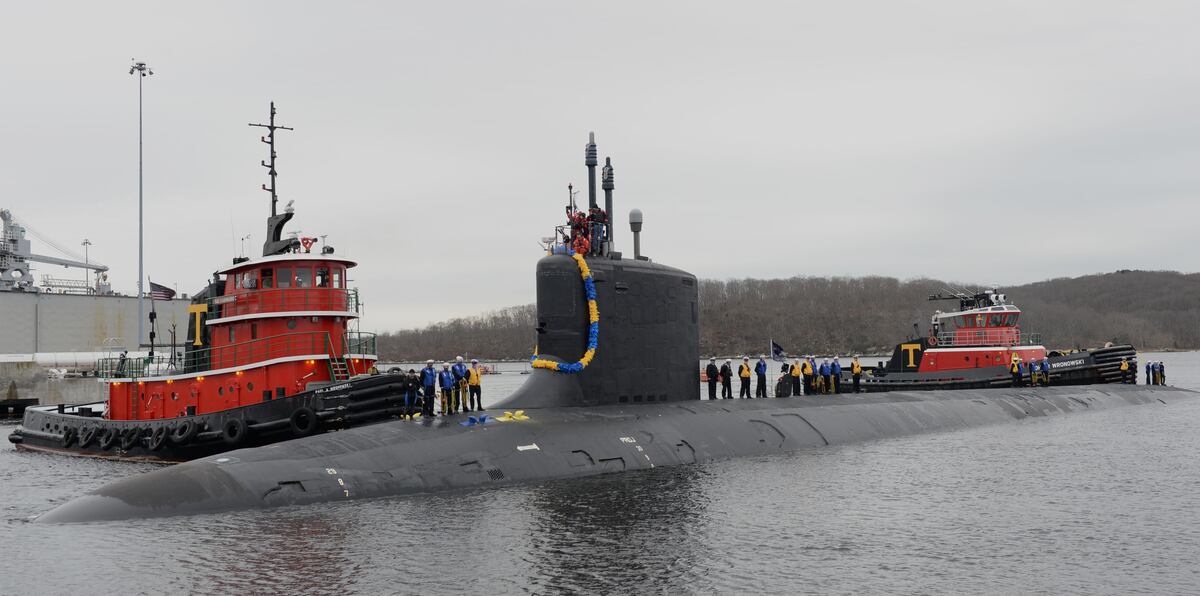WASHINGTON — After several years of increasing spending and virtually unprecedented shipbuilding budgets, the U.S. Navy’s party could be coming to a screeching halt in the 2020 budget, according to analysts and insiders who spoke to Defense News.
Conversations with more than a dozen insiders, lawmakers and analysts reveal a far less friendly upcoming budget cycle for the U.S. Navy than the previous three, and anxiety is growing about just where the ax is going to fall.
The president’s announcement that the Pentagon’s topline budget is likely coming down to $700 billion in 2020 from 2019’s $719 billion has some seapower advocates and analyst pointing to the shipbuilding budget as a place that DoD might look for savings.
“If the FY20 budget request comes in a $700 [billion] then it could be bad news for shipbuilding, because that’s one of the fastest ways to take money out of the budget at the last minute, which is what they are trying to do,” said defense budget analyst Todd Harrison with the Center for Strategic and International Studies.
The dropping topline could mean the long-congressionally protected shipbuilding budget, which grew from an average of $17 billion (in 2018 dollars) annually at the beginning of the decade to north of $24 billion in 2019, might have capped out. And even with the major plus-ups, the budget was still about $4 billion shy of what the non-partisan Congressional Budget Officer said would be the average annual cost of the Navy’s 2019 30-year shipbuilding plan.
RELATED

But to what extent Congress will be willing to take a hack at the shipbuilding budget is an open question, one that lawmakers say will be pressurized once the President’s Budget for 2020 drops.
“The press reports are that the topline is going to be lower and significantly so, and that’s going to intensify the competition for priorities,” said Rep. Joe Courtney, D-Conn., who is the presumptive next chairman of the House Armed Services Committee’s seapower subcommittee. “I think the call for a larger fleet is a bipartisan one, but a lower topline is going to be a challenge for everyone.”
The message from the Defense Department has been anything but clear.
When asked by a reporter about building up Navy capacity in an Oct. 26 roundtable, Pentagon number 2 Patrick Shanahan was evasive, saying that the focus inside aviation was getting the most out of the inventory the Navy already had. When it came to ships, Shanahan said, he wanted more but said the department — two years into the administration’s promised buildup — was unsure of what the right mix of ships would be.
“In the work that we’re doing right now, it’s ‘What’s the right mix?’ and its pre-decisional here, but we want more, not less,” said Shanahan, who is the deputy secretary of defense. “We think in this budget quantity is very important. Less exquisite, higher quantities.”
Whither cuts?
But if the Navy is going to go after “less exquisite” ships, it’s unclear were the cuts would come.
Some of the Navy’s most exquisite programs — the Flight III Arleigh Burke-class destroyer and the Virginia-class fast-attack submarine — are on multiyear contracts that would be painfully expensive to break. And the Columbia program has been the Navy’s top priority for years now, something that Courtney said he doesn’t think will see the budget ax anytime soon.
Courtney, whose district includes the General Dynamics Electric Boat shipyard, said Columbia was viewed as a vital program even during the more spare Obama years.
“Sea-based deterrent is still a pillar,” he said. “Even if people want to look at the composition of the triad, I think the sea-based leg enjoys bipartisan support.”
The key, Courtney said, will be to balance the imperative to grow the fleet with the $7.2 billion-per-hull Columbia Class.
The littoral combat ship will almost certainly be a ripe target for cutting, since it is already three ships past its requirement. Its replacement, the FFG(X), is slated to be awarded by the end of this fiscal year and is a high-priority program, also unlikely to be cut.
RELATED
Congress to buy 3 more LCS than the Navy needs, but gut funding for sensors that make them valuable
Cutting LCS entirely,, however, might threaten jobs in two Trump states, Wisconsin and Alabama. And those layoffs would hit just about the time in 2020 when they could become a reelection campaign issue for President Trump, who ran on shipbuilding jobs and a bigger Navy to support them.
There are some programs that could be in the crosshairs in lean times, said Bryan Clark, a retired submarine officer and analyst with the Center for Strategic and Budgetary Assessments.
The Flight II amphibious transport dock, built by Huntington Ingalls, is not on a multi-year contract, Clark said, and therefore vulnerable to the budget ax. Congress has put in a little over $500 million in advanced procurement for the first hull, but delaying the construction could save the Navy money year-to-year even if it ends up costing the Navy more in the aggregate.
The other big area the Navy could look to save money is aircraft carriers, Clark said.
“That’s one area where the Navy often goes to look for savings,” Clark said. “The Navy might be seriously looking at slowing down carrier procurement. If you stretch out the carrier buy to six or even seven years, you may spend more eventually, but you’ll spend less every year.”
The Navy seemed hesitant to embrace the idea of buying two carriers at once to achieve block-buy savings when it was gaining traction in the Congress last year, and ultimately the issue was tabled for further studies, which are ongoing.

More boom than bust?
Back on the HASC seapower subcommittee, the overarching concern among members is that shipbuilding keeps a steady pace and avoids the boom-and-bust cycles that create layoffs and the loss of skilled workers — losses that tend to compound delays and create quality control issues for new ships coming off the lines.
That’s something that Congress will need to be mindful of, said Rep. Rob Wittman, R-Va., and the current chairman of the member of the seapower subcommittee, especially as they continue the push to get to a 355-ship Navy.
“The issue will be 'how do we get there at a sustainable pace?’ I don’t want this to be a rollercoaster ride,” Wittman said in an interview the day after his reelection. “I want to see a steady pace.
“Extending the service lives of ships like we are doing with the 688s, the [Los Angeles-Class fast attack submarines], that’s going to have an impact. We have to start looking at the Flight I [Arleigh Burke-class] destroyers, those need to be modernized. The need for this is real, all you have to do is look around the world today to see that our adversaries are building their navies at a breakneck pace.”
There is reason to think that the shipbuilding and modernization budgets could be shielded in the fight for resources tipped off by the president’s announcement.
For at least the past eight years, Congress has appropriated more money than the president’s budget asked for in the shipbuilding account. The past two cycles has created an almost unprecedented shipbuilding boom cycle.
Another aspect, one that may not be clear to outsiders, is the degree to which boom-and-bust cycles in shipbuilding are often self-inflicted wounds. Congress has long enjoyed pumping billions into their districts to build Navy ships, but when there have been big breaks in shipbuilding that has hurt jobs and the retention of critical skills, it has often been the fault of either industry of the Navy for poor acquisition practices, said Clark, the CSBA analyst.
“The counter-intuitive piece of this is that the boom and bust years are usually the result of poor acquisition programs,” Clark said, citing fluctuations in the LCS program as a prime example. “And it’s for one reason or another: either the design was flawed, shipbuilders were having issues, or the program wasn’t being managed correctly.
“Even in the austere times Congress has shown a willingness to buy ships. But if those programs were not well run, they would be much more likely to be cut.”
Other places in the budget that could see a significant cut would be places like the research and development budget. With Mattis as defense secretary, it is unlikely that personnel would take a cut since it would negatively impact readiness.
‘Winter is Coming’
The angst over falling budgets, however, is not occurring in a vacuum. The discussion around defense cuts is happening at the same time as rapidly ballooning deficits driven by debt finance charges coming due that make even the most free-spending politicians shudder.
In September, the New York Times reported that over the next decade nearly a trillion dollars in interest payments are coming due annually and that rates are only going up on that debt. That means that federal spending on debt is due in the coming years to outpace defense spending.
That factor, combined with a rapidly expanding budget deficit that will top $1 trillion annually next year, exacerbated by declining revenues resulting from recent tax cuts, is causing Washington to look around for savings.
The mounting stack of bills prompted the Trump administration to call for a 5 percent cut to the budgets of all federal agencies, with the big story for DoD being that the bell did toll for them also.
The overall fiscal situation means that the big defense spending that marked the last three budget cycles may be a much tougher sell, especially now that the House of Representatives and the Senate will have different spending priorities after Republicans lost their single-party control of Washington.
And signs are mounting that the Washington DC fiscal hawk, until recently an endangered species, has made a comeback. That means the kind of partisan bickering that created the Budget Control Act and sequestration in the Obama years could likewise return.
And all this with the Navy still well short of even its more modest Obama-years goal of 308 ships, said Bryan McGrath, deputy director of Hudson Institute’s Center for American Seapower.
“As of today, we have 285 or 286 ships,” McGrath said. “We are not significantly better where we were under Obama.
“What we have done over the past three cycles of plus-ups was apply needed funds to the readiness accounts. But those things aren’t fixed yet,” he said, adding that more funding for readiness is required and that Mattis has shown little interest in rapidly growing the fleet at the expense of readiness.
Ultimately, with the winds shifting back towards more fiscal restraint, the Navy is going to have to deal with a new fiscal reality that will not look like the free-wheeling spend-fest of the last two years.
“Winter is coming and we better prepare for it,” McGrath said.
David B. Larter was the naval warfare reporter for Defense News.




